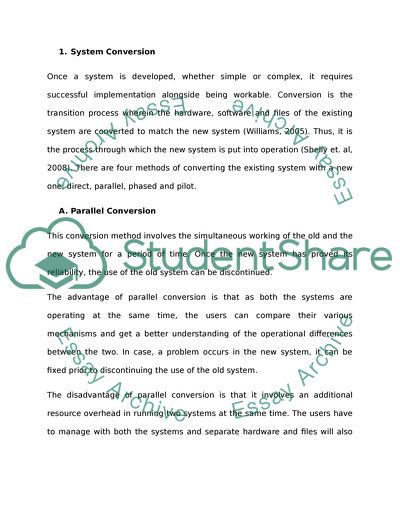System Conversion Methods Research Paper Example | Topics and Well Written Essays - 750 words. Retrieved from https://studentshare.org/information-technology/1438408-system-conversion-methods
System Conversion Methods Research Paper Example | Topics and Well Written Essays - 750 Words. https://studentshare.org/information-technology/1438408-system-conversion-methods.


